Category: Improving Your Art
-
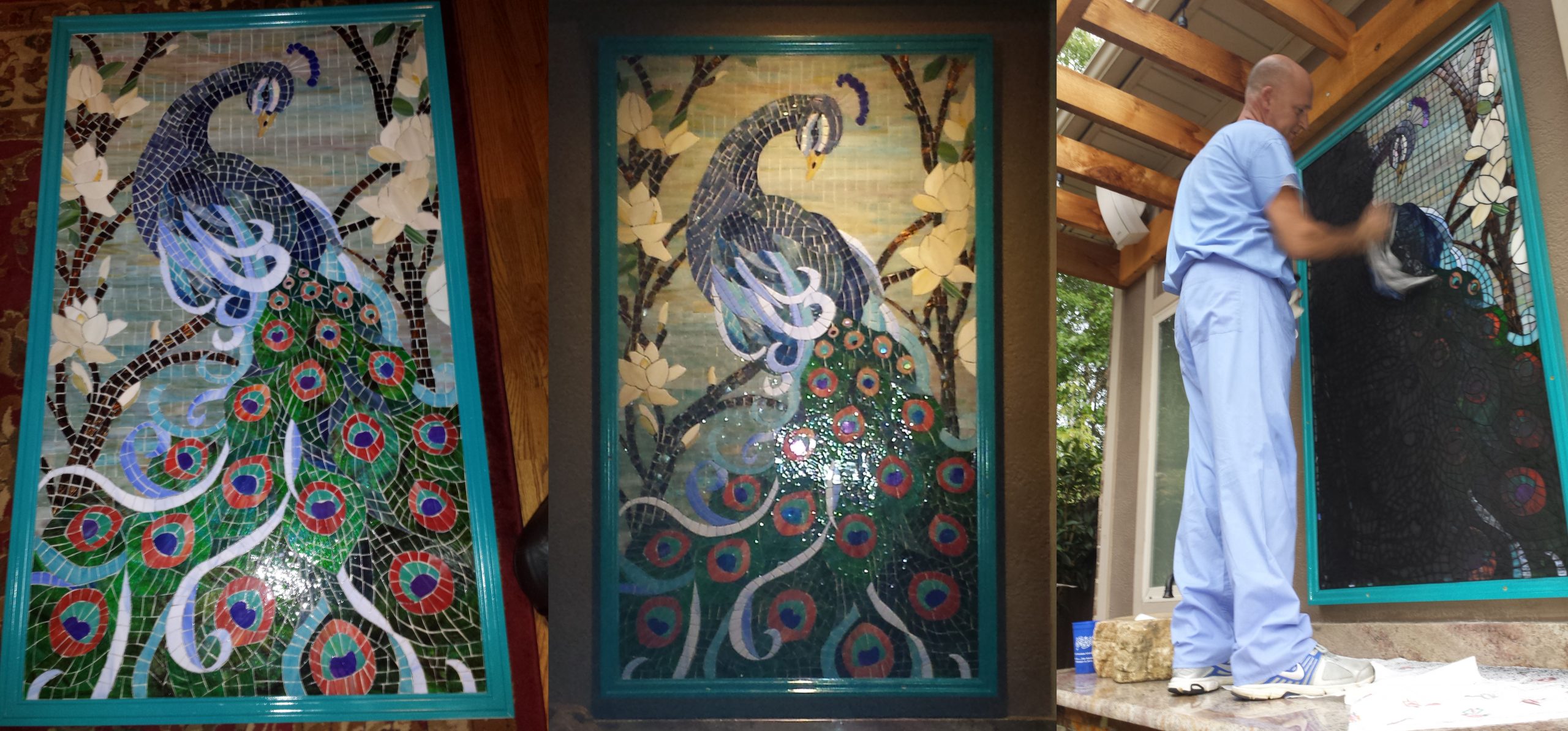
Mosaic Peacock: A Cautionary Tale
My recent blog article about small mosaics has a section at the end that explains how to take catalog-ready photos of mosaic art. My article about mosaic frames includes some discussion about the best light for photographing artwork and the need to avoid foreshortening. I know why the issue is coming up more and more…
-
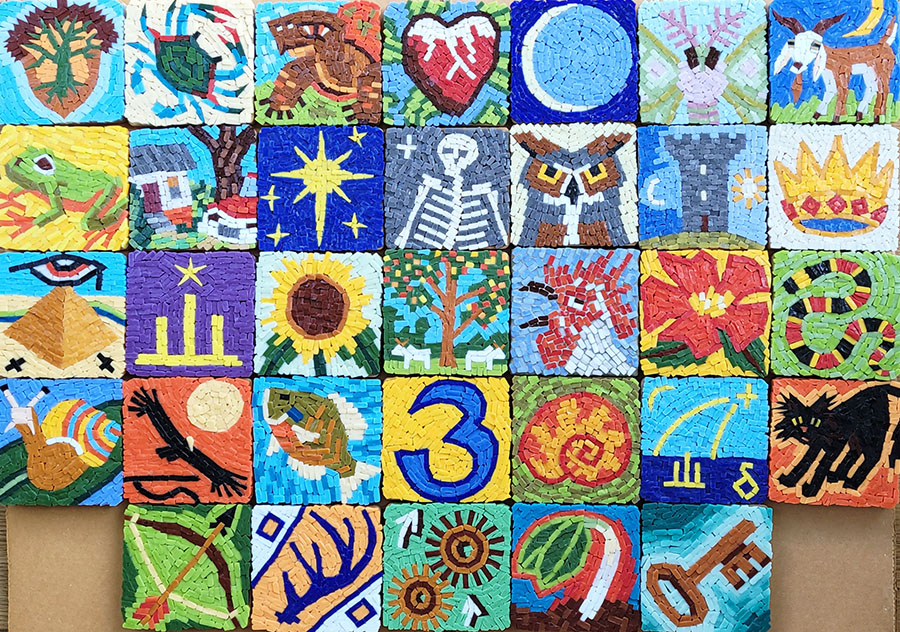
Small Mosaics Update
I have been making some small mosaics on our bamboo mosaic coaster backers, and I wanted to share a photo of the collection so far and talk about some more advantages of working in a series of smalls. Each of these coasters will be a “tile” that is used in a large sculpture that is…
-
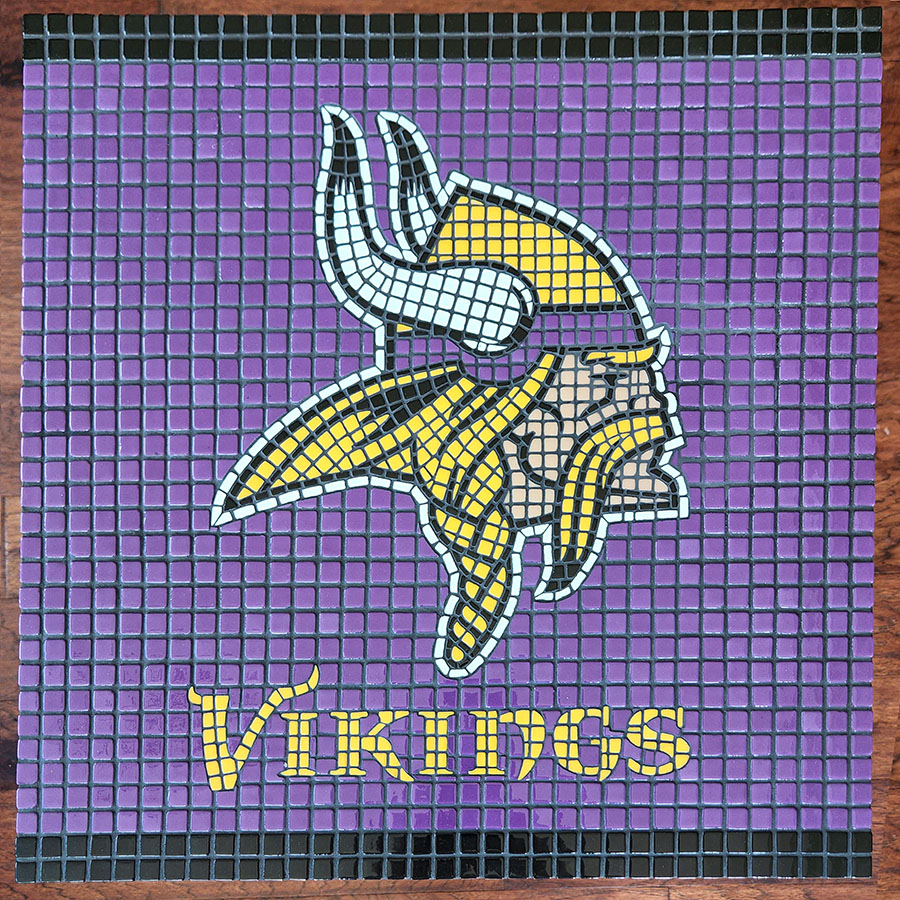
Sports Logo Mosaic
A stylized logo or pattern is different from a picture of an object. In a picture, the goal is to create a sense of verisimilitude (likeness) by including small details and visual complexity. In a logo, there is an opposite emphasis. To create a logo, images are “posterized” and every element is reduced to monochromatic…
-
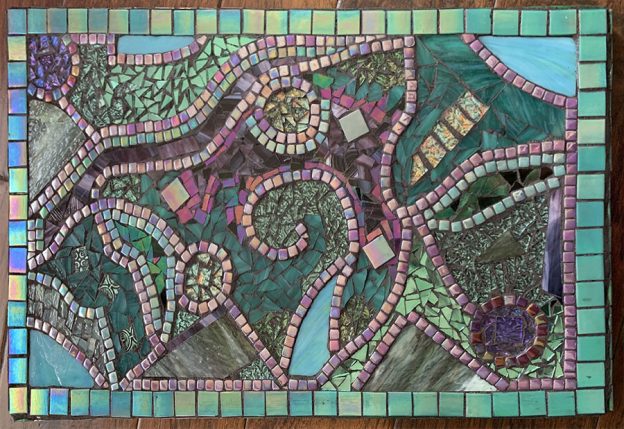
Curves Not Lines for Better Mosaics
Artist Marianne Limandri’s mosaics are good examples of how to create more interesting designs by thinking in terms of curves instead of straight lines. Straight line segments (or their imperfect representations) occur all the time in nature, from cactus needles all the way up to the endless horizon on the open sea, but they are…
-
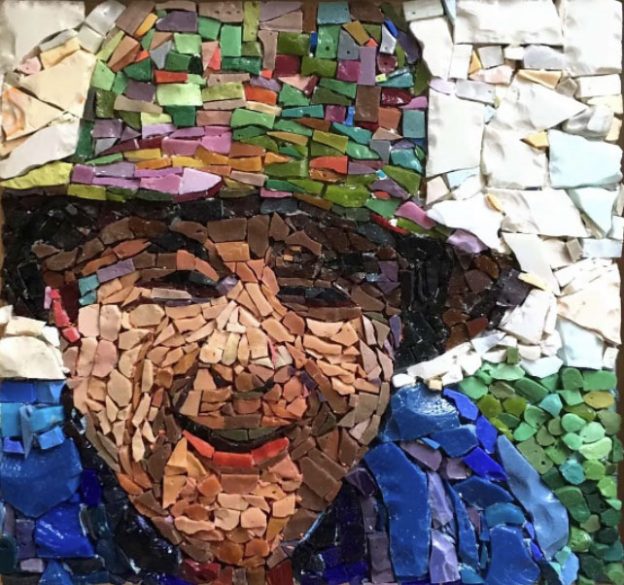
Mosaics in a Painterly Style
Paints can be blended to any shade or hue, but the mosaic medium requires that an artist render an image in a limited set of fixed colors. The color palettes of molded glass tile product lines are limited to 40 to 60-ish colors, and this limitation seems to encourage novice artists to work in a…
-
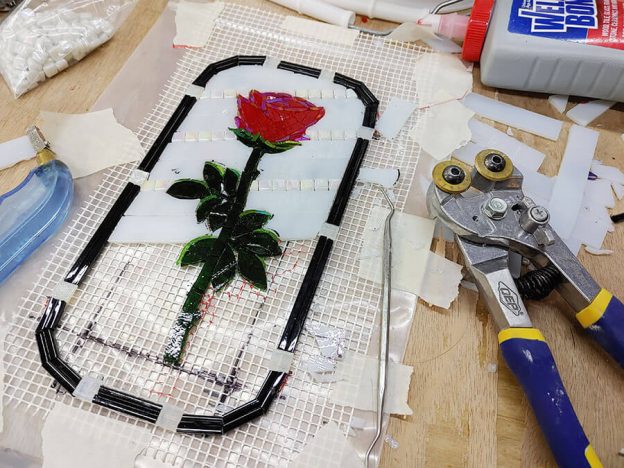
Video of Mosaic Rose Design Process
Natalija has filmed a video of her laying out a rose mosaic inset for her new home, and it’s a good demonstration of cutting and fitting tile and other basic techniques. More importantly, it shows the process of design evolution by trial and error, something that is lacking in most craft videos.
-
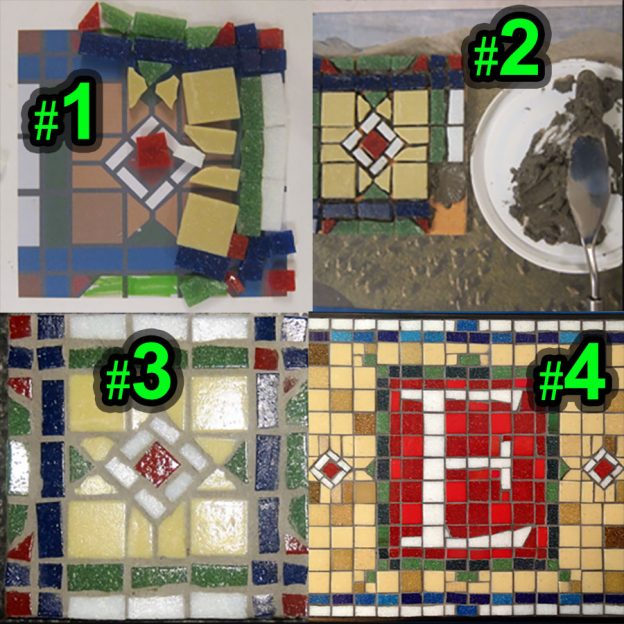
Secret to an Exceptional First Mosaic
I’ve already written about Brad Srebnik’s first mosaic and how impressive it is. It’s also amazing how well Brad documented the process as he was learning it. Brad emailed me a summary of his methods and the lessons he learn from the project. He has some good photos of some important steps, including making a…
-
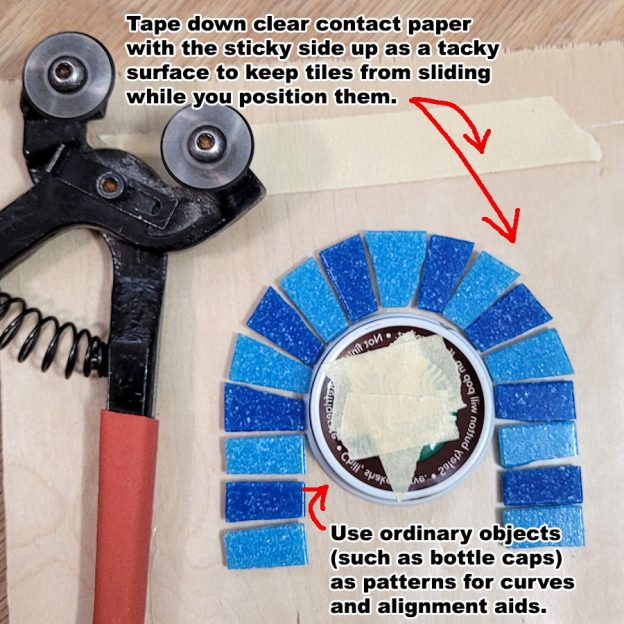
Cutting Glass Mosaic Tile: A Practical Guide
Designs are said to be elegant when they “don’t try to push things uphill” but instead go with the natural flow of materials and forces. Consider the Roman arch versus a rectangular doorway with a flat lintel on the top. The flat lintel could be constructed from a superior material than that used in the…
-
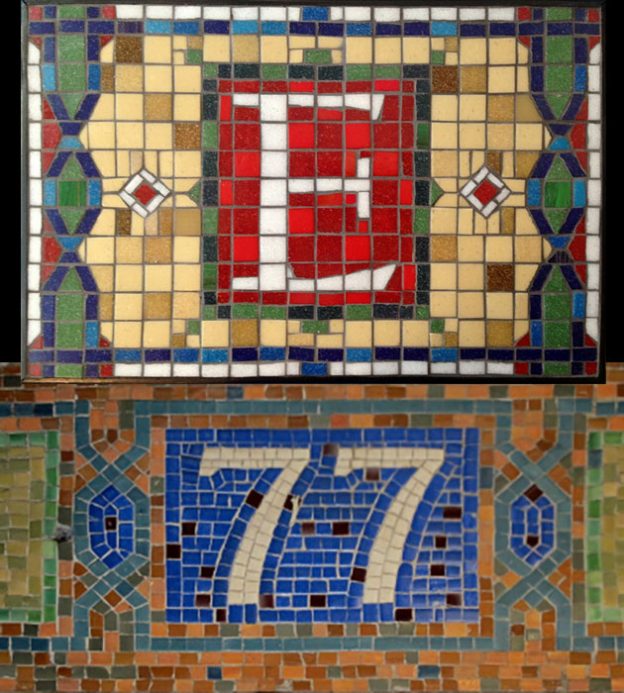
Inspiration Versus Reproduction
I once had an employee-artist who became angry with me for encouraging people who didn’t think they could draw to trace artwork or photos to make patterns. I explained that we wanted to reach all skill levels and that included some people who would be attempting mosaic or even art for the first time. I…
-
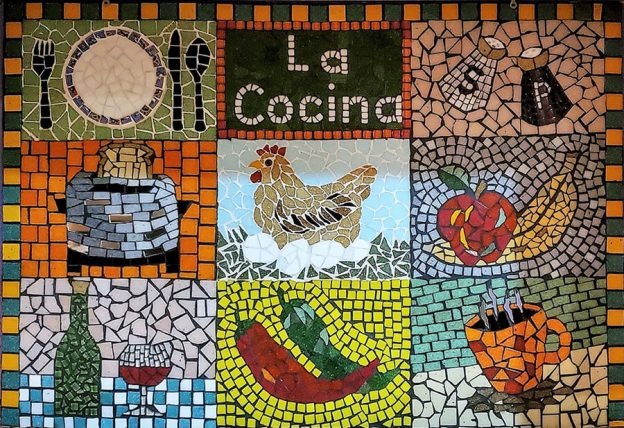
White Grout Mosaics
Artist Jill Gatwood sent me some photos of mosaics made by her and her students as examples where white grout was used with good results. Jill says she didn’t used to offer white grout as an option for grouting in her class, but has since done so with some surprising discoveries. The featured mosaic for…
-
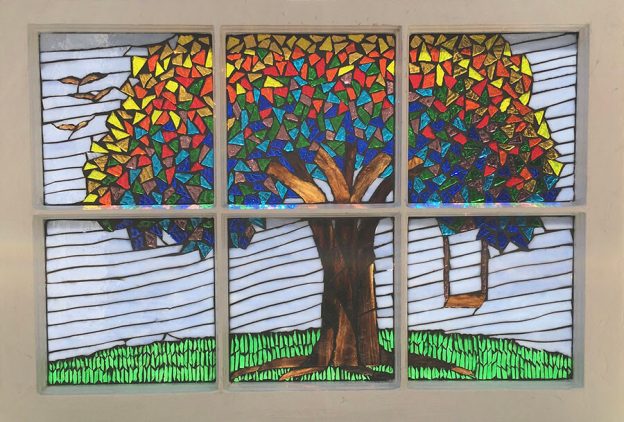
Glass-On-Glass Mosaic Grout Color
Artist Laura Adams emailed me for advice on selecting a grout color for her glass-on-glass mosaic, and it is a good case study for several reasons. First, the sky of the mosaic is a whitish gray. Second, Laura made sure to photograph the mosaic with two different lighting regimes: backlit from behind and regular lighting…
-
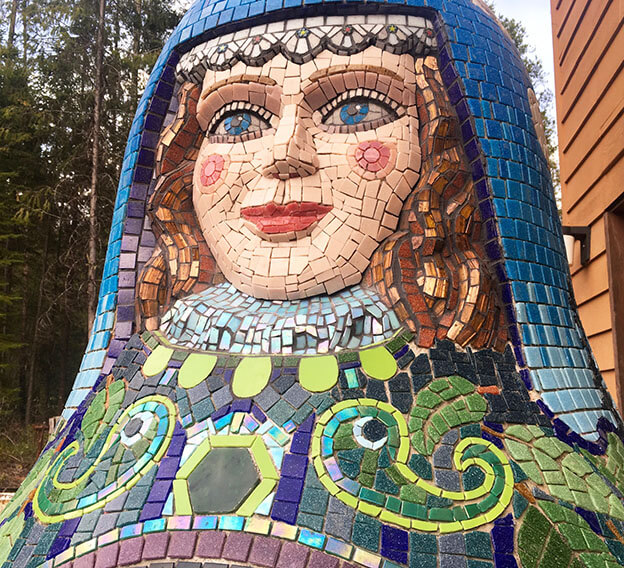
Natalija the Mosaic Russian Doll
Most artists are aware of how much personality a work of art can assume during the process of creation, especially when the piece of art requires a long period to complete. Artist Peter Vogelaar says he often spoke to his “Rebirth” mosaic matryoshka sculpture while working on her and referred to her as Natalija. A…
